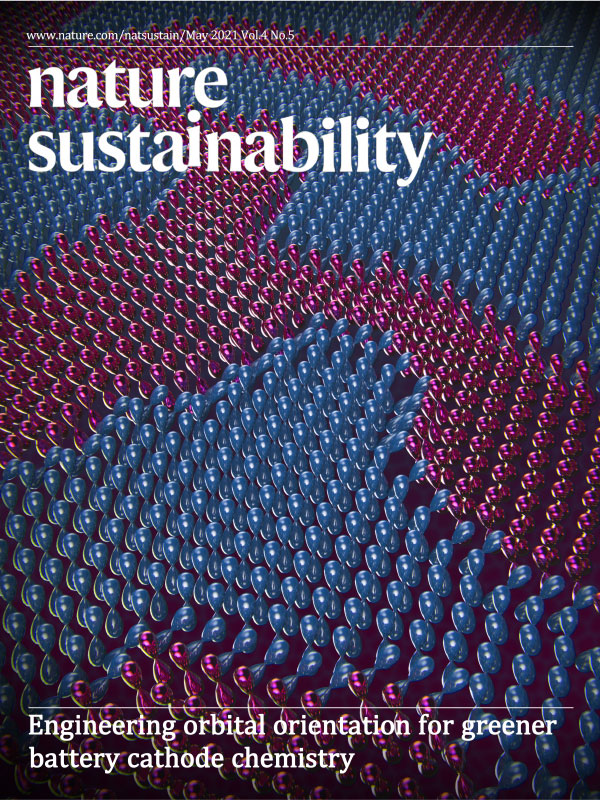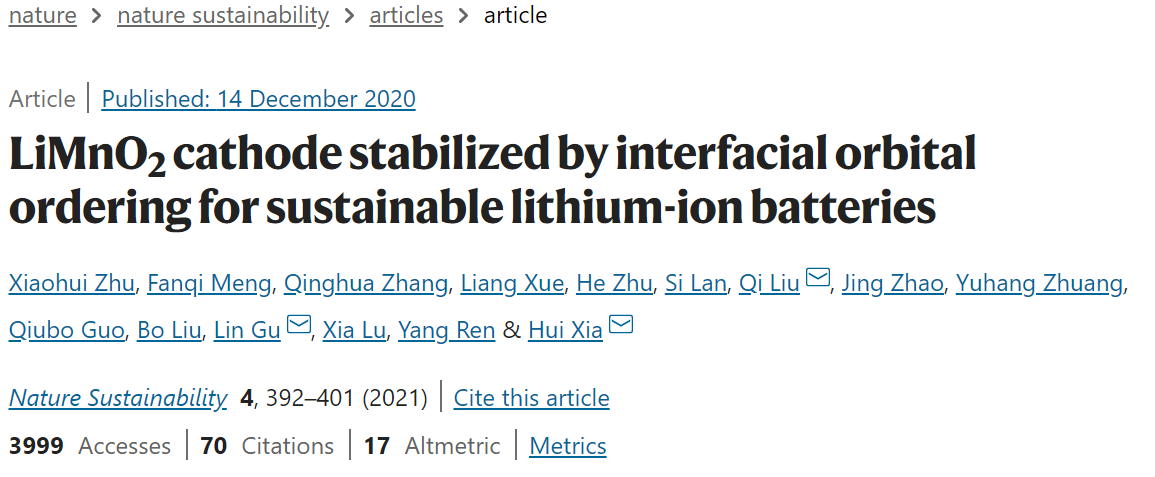Nature Sustainability中稿封面
Jun 02,2021
The image designed by SPHERE is selected as the cover of Nature Sustainability in May 2021.
The current reliance of the cathode of lithium-ion batteries on cobalt poses challenges in terms of sustainability. Xia and colleagues engineer the atomic orbitals to realize a high-performance cathode that is based on environmentally friendly and low-cost manganese.
Abstract
Global lithium-ion battery deployments stand poised to grow substantially in the coming years, but it will be necessary to include sustainability considerations in the design of electrode materials. The current cathode chemistry relies heavily on cobalt, which, due to its scarcity and the environmental abuse and violation of human rights during its mining, must be replaced by abundant and environmentally friendly elements such as redox-active manganese. LiMnO2 is a strong contender for sustainable cathodes but cycles poorly because the Jahn–Teller distorted Mn3+ ions destabilize the lattice framework. Here, we report a LiMnO2 cathode design with interwoven spinel and layered domains. At the interface between these two domains, the Mn dz2 orbitals are oriented perpendicular to each other, giving rise to interfacial orbital ordering, which suppresses the otherwise cooperative Jahn–Teller distortion and Mn dissolution. As a result, the heterostructured cathode delivers enhanced structural and electrochemical cycling stability. This work provides a new strategy for interface engineering, possibly stimulating more research on Mn-rich cathode materials for sustainable lithium-ion batteries.

PREV: Nature Catalysis中稿封面
NEXT: 《RNA甲基化表观转录组学》封面图

